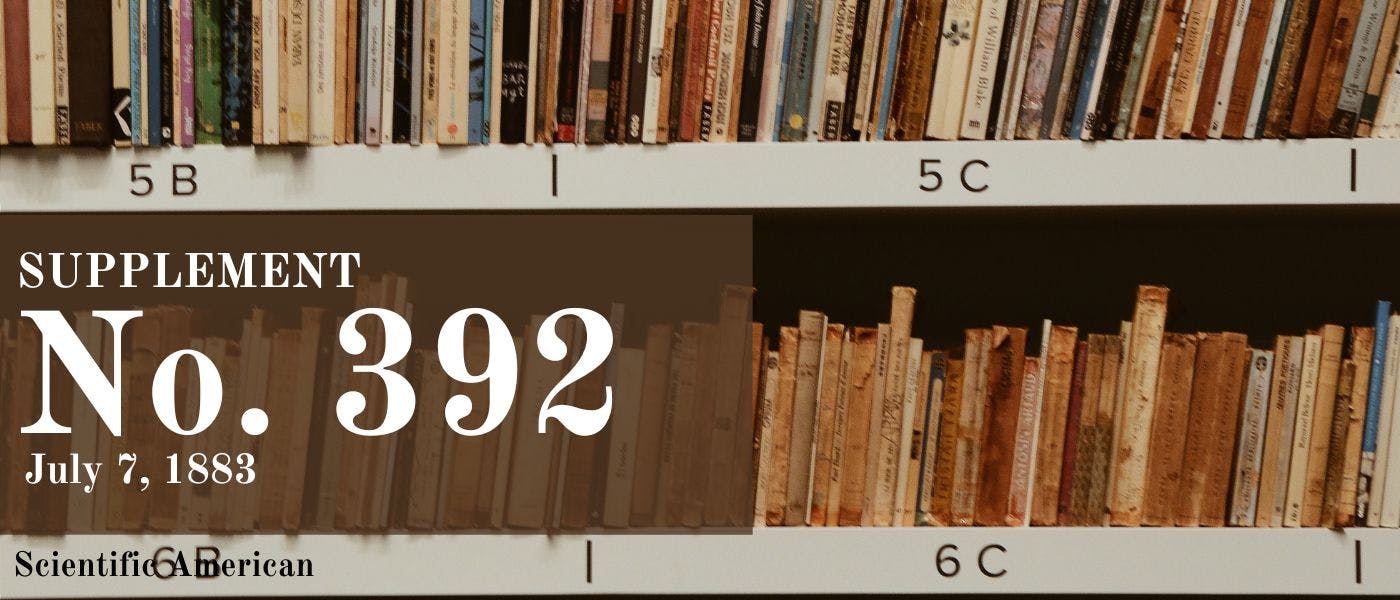Scientific American Supplement, No. 392, July 7, 1883 by Various, is part of the HackerNoon Books Series. You can jump to any chapter in this book here. A GREEN OR GOLDEN COLOR FOR ALL KINDS OF BRASS.
A GREEN OR GOLDEN COLOR FOR ALL KINDS OF BRASS.
By E. PULCHER.
The French brass castings and articles of sheet brass are made of cheap, light colored brass, and possess a fine golden color which is not produced by gold varnish, but by a coating of copper. This gives them a finer appearance, so that they sell better.
This golden color can be easily produced at very little expense and with but little trouble by the following process. Fifty grammes of caustic soda and 40 grammes of milk sugar are dissolved in a liter of water and boiled for a quarter of an hour. The solution is clear as water at first, but acquires a dark yellow color. The vessel is next taken from the fire, placed on a wooden support, and 40 grammes of a cold concentrated solution of blue vitriol stirred in. A red precipitate of suboxide of copper is at once formed, and by the time the mixture cools to 167° Fahr., the precipitate will have settled.
A suitable wooden sieve is placed in the vessel, and on this the polished articles are laid. In about one minute the sieve is lifted up to see how far the operation has gone, and at the end of the second minute the golden color is dark enough.
The sieve and articles are now taken out, and the latter are washed and then dried in sawdust. If the brass is left longer in the copper solution, in a short time a fine green luster is produced, becoming yellow at first and then bluish green. After it turns green, then the well-known iridescent colors finally appear. To obtain uniform colors it is necessary that they be produced slowly, which is attained at temperatures between 135° and 170° Fahr.
The copper bath can be used repeatedly and can be kept a long time if bottled up tightly without change. After it is exhausted it can be renewed by adding 10 grammes of caustic soda, replacing the water that has evaporated, heating to boiling, and adding 25 grammes of a cold solution of blue vitriol.
Similar operations with other well known reducing agents, such as tartrate of soda, glycerine, etc., do not give such good colors, because they do not precipitate the copper solution so rapidly and at so low a temperature.
If the rinsed and pickled brasses are dipped for five minutes in a three per cent. neutral solution of cocoa nut oil soap, and then washed with water again before they dry, the coating gains in permanence.
Brass articles that have to be cleaned frequently should be covered with oil of turpentine, or thin English copal varnish.--Neueste Erfind.
About HackerNoon Book Series: We bring you the most important technical, scientific, and insightful public domain books.
This book is part of the public domain. Various (2005). Scientific American Supplement, No. 392, July 7, 1883. Urbana, Illinois: Project Gutenberg. Retrieved https://www.gutenberg.org/cache/epub/8742/pg8742-images.html
This eBook is for the use of anyone anywhere at no cost and with almost no restrictions whatsoever. You may copy it, give it away or re-use it under the terms of the Project Gutenberg License included with this eBook or online at www.gutenberg.org, located at https://www.gutenberg.org/policy/license.html.

